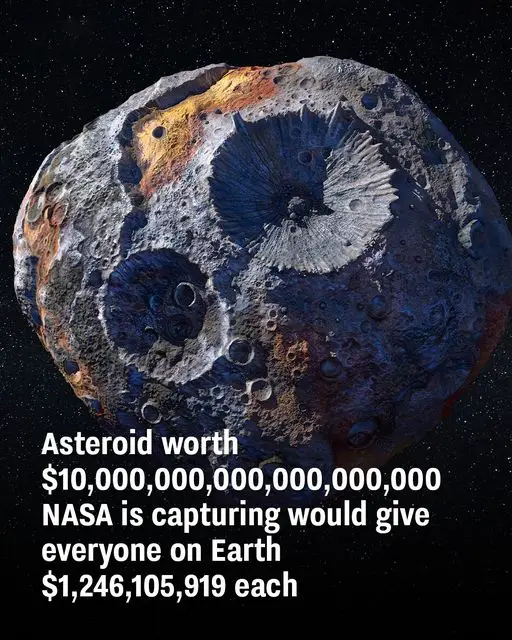NASA’s recent mission to 16 Psyche, an asteroid in the main belt between Mars and Jupiter, has raised intriguing questions about its potential value. The spacecraft, launched aboard SpaceX’s Falcon Heavy rocket, is traveling 2.2 billion miles (3.5 billion kilometers) to study this massive asteroid, which is composed of metals such as platinum and palladium—valuable elements for Earth’s economy, especially in electronics and vehicles.
16 Psyche is the largest known metal-rich asteroid, with an estimated surface area of 64,000 square miles (165,800 square kilometers). NASA believes that it’s made up of 30 to 60 percent metal, possibly including the exposed nickel-iron core of an early planetesimal—one of the building blocks of our solar system. This makes the asteroid a prime candidate for study, not just because of its material wealth, but because it could offer insights into planetary formation.
If the asteroid’s metals were to be harvested and valued at $10 trillion, the financial impact would be enormous. With a population of 8.025 billion people in 2023, dividing this wealth among all humans would give each person approximately $1.25 billion. While this may seem like a dream scenario, it would likely cause massive economic disruption.
Despite the financial allure, NASA’s mission is focused on understanding the asteroid’s role in planetary evolution. The spacecraft is not intended to harvest the materials, but rather to study the asteroid’s composition and its connection to the early solar system. The mission will also help determine if 16 Psyche is indeed the remnant core of a planetesimal, offering a unique look into the violent history that shaped terrestrial planets.
NASA’s Psyche spacecraft is expected to reach the asteroid by July 2029.

Leave a Reply